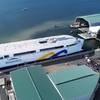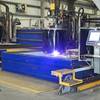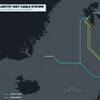Port Of Felixstowe Commissions Greener RTG Cranes
The Port of Felixstowe has taken another step to improve both its operational and environmental efficiency with the introduction of its first electric-powered Rubber-Tyred Gantry Cranes (RTGs).
The four machines, originally manufactured by ZPMC in Shanghai, have been converted from diesel to electric primary drive in the first project of its kind in Western Europe. The work was undertaken by Kalmar, part of the Cargotec group.
Commenting on the initiative, Paul Davey, Head of Corporate Affairs, Hutchison Ports (UK) Ltd, owners of the Port of Felixstowe, said, "The Port of Felixstowe is fully committed to providing the highest levels of operational performance whilst at the same time reducing the impact of its operations on the environment. This pilot project to electrify four RTGs will help us achieve both objectives. The greener machines are the latest in a programme of measures which has seen carbon emissions at the port cut by 12% since 2007, keeping us on course to achieving a target reduction of 30% by 2017."
The electric RTGs are expected to make a significant contribution to further increase carbon savings. It is estimated that each machine will deliver energy savings of at least 45% compared with conventional diesel machines. With a comparable reduction in emissions, the conversion programme will also contribute to improving air quality in and around the port.
The conversion project involved installing electrical infrastructure along the full 217 metre length of two of the port's RTG container storage blocks. The RTGs themselves were modified to install an automatic drive-in collector unit to connect to the electric supply as well as fitting new operator controls and a conductor bar system to supply power to the electric motors.
Importantly, the design allows RTGs to move between storage blocks and connect quickly and easily to a new electricity supply. This retains the inherent advantage of RTGs over rail-mounted alternatives, allowing greater flexibility and an improved ability to match equipment to variable patterns of demand.
The converted machines have also been fitted with an auto-steer function when connected to the conductor bar system through which the electricity is supplied. This system reduces the demand on the driver, minimizing fatigue and allowing him to focus on the efficient movement of containers.











